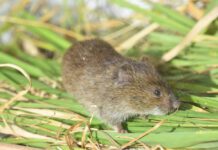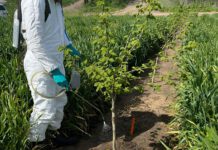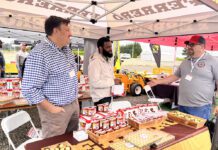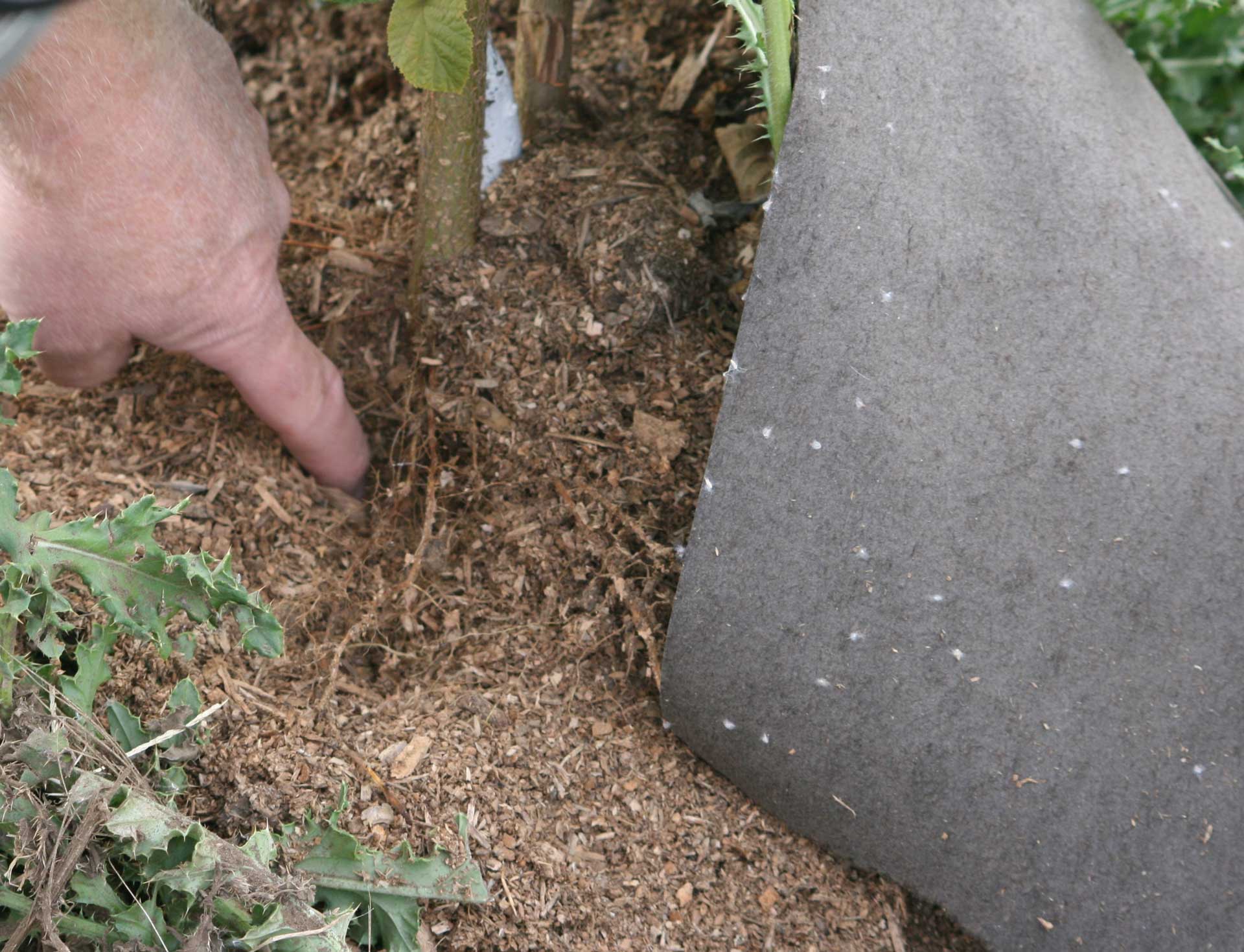
Using tie-off layering (with hog rings) to propagate hazelnut trees is a popular method among hazelnut nurserymen. Tie-off layering and the stool-bed method can be done using young trees in the orchard rows or in a separate nursery plot. Both propagation methods require less specialized equipment and controlled growing conditions than propagating from cuttings or grafting techniques.
Pruning Nursery Trees to Sucker
In late winter, hazelnut grower Telly Wirth of Tangent, Ore. pruned his nursery trees back hard, lopping off all the branches to about a 36-inch-tall trunk. He then rubbed off all the “pre-buds” along the trunk with his hand. Above ground, the pre-buds grow into limbs. Below ground, they grow into roots, Wirth explained.
“The harder you prune them, the more they sucker,” Wirth said of the nursery trees. He grows 150 acres of hazelnuts and 2,500 acres of grass seed and other crops in the Willamette Valley.
He’s growing quite a few PollyOs, a newer OSU variety that seems to sucker well. Jefferson is another heavy suckering tree, Wirth noted. Some of the other varieties don’t sucker well, such as Yamhill and McDonalds. There are plusses and minuses to both heavy-suckering and low-suckering varieties. Those that don’t sucker as well in the nursery block also don’t sucker heavily in the orchard, a definite plus. Heavy-suckering varieties are simpler to propagate larger quantities of new trees but create more work in the orchard to maintain.
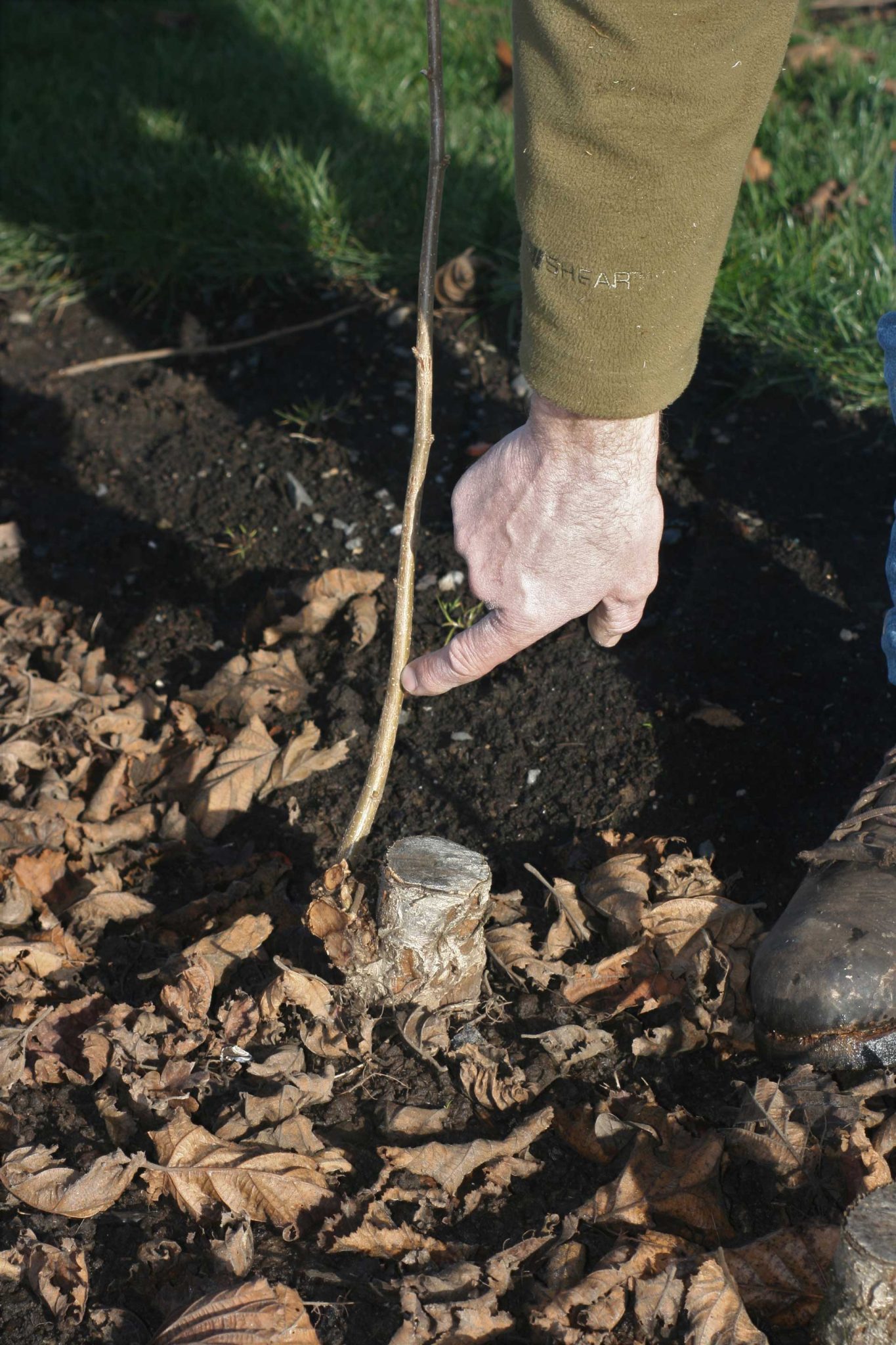
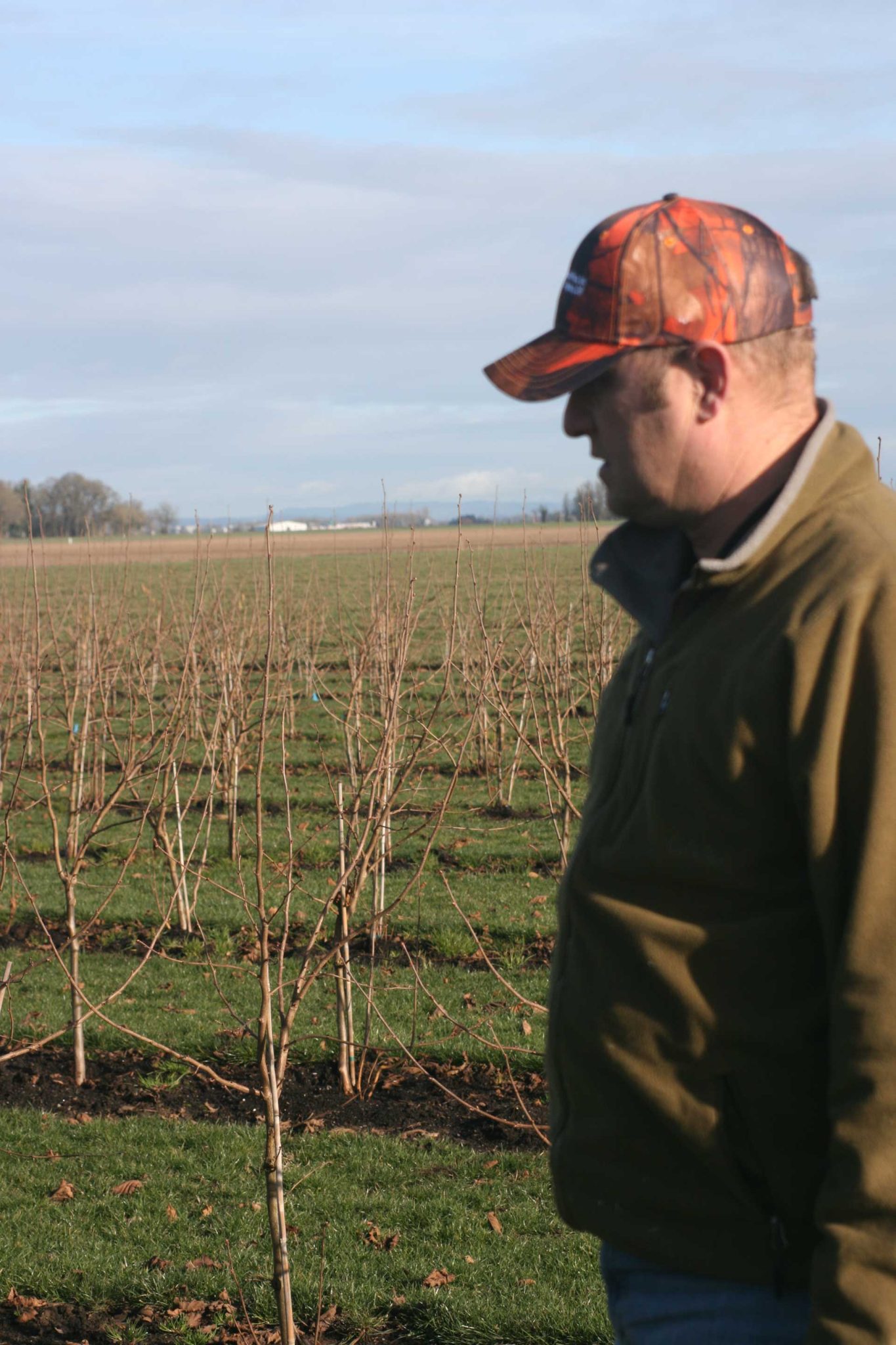
Use Suckers, Not sprouts
Jeff Newton, semi-retired former farm manager for Crimson West/Christensen Farms of McMinnville, Ore., said that when propagating hazelnuts, it’s important to make sure that you’re using suckers, which come from the root, instead of sprouts, which originate from the mother tree’s trunk or branches. Suckers produce stronger trees, he said.
The growers that Wirth sells to prefer nice straight young trees. If trees are started from sprouts off the trunk of the mother tree, instead of from suckers, those new trees will have a big curve in their trunks near the ground after they’re planted in the orchard. This doesn’t much bother Wirth because “hazelnut trees grow every stinkin’ direction,” he said. But out of consideration for the straight young trees his customers are looking for, he propagates from suckers.
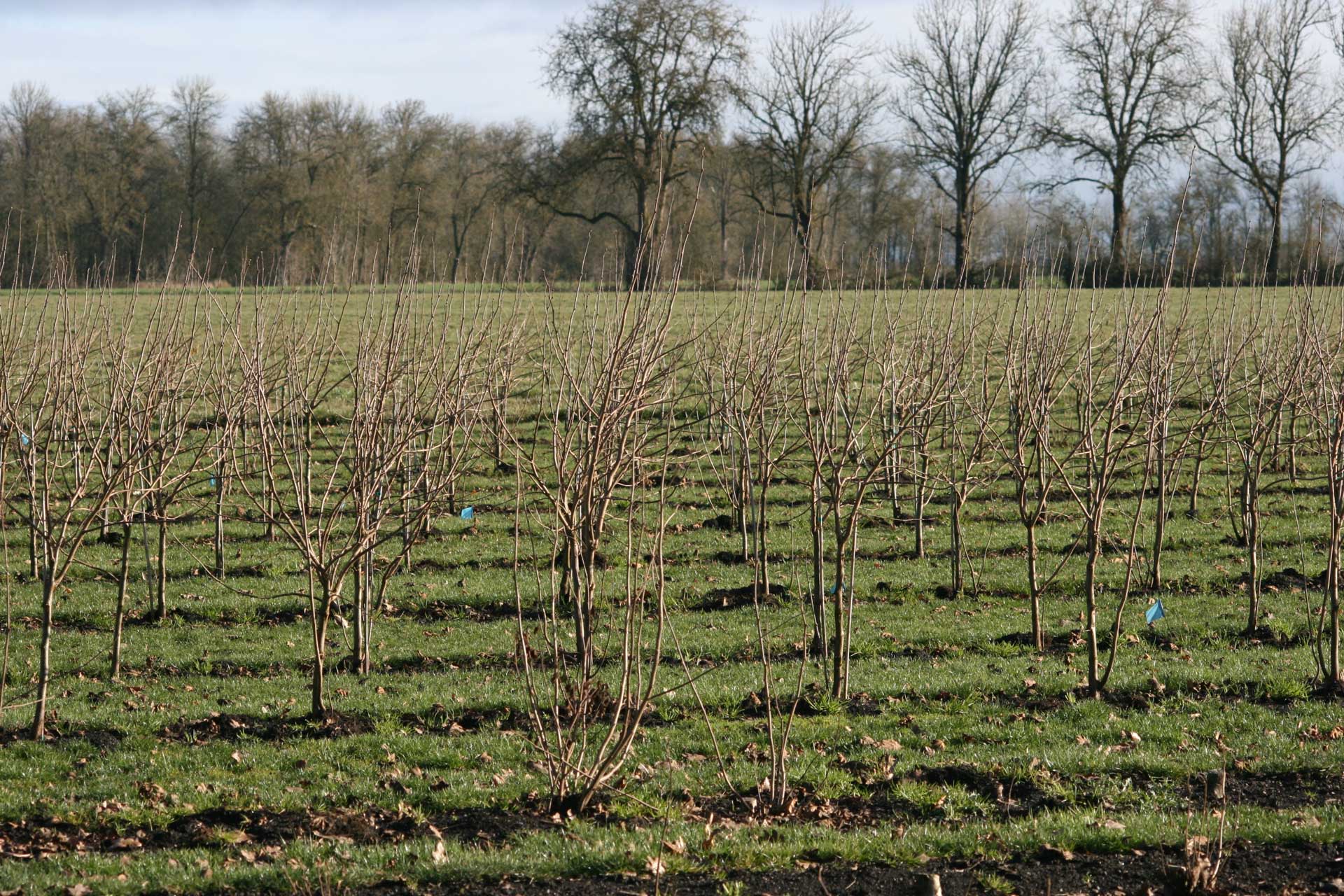
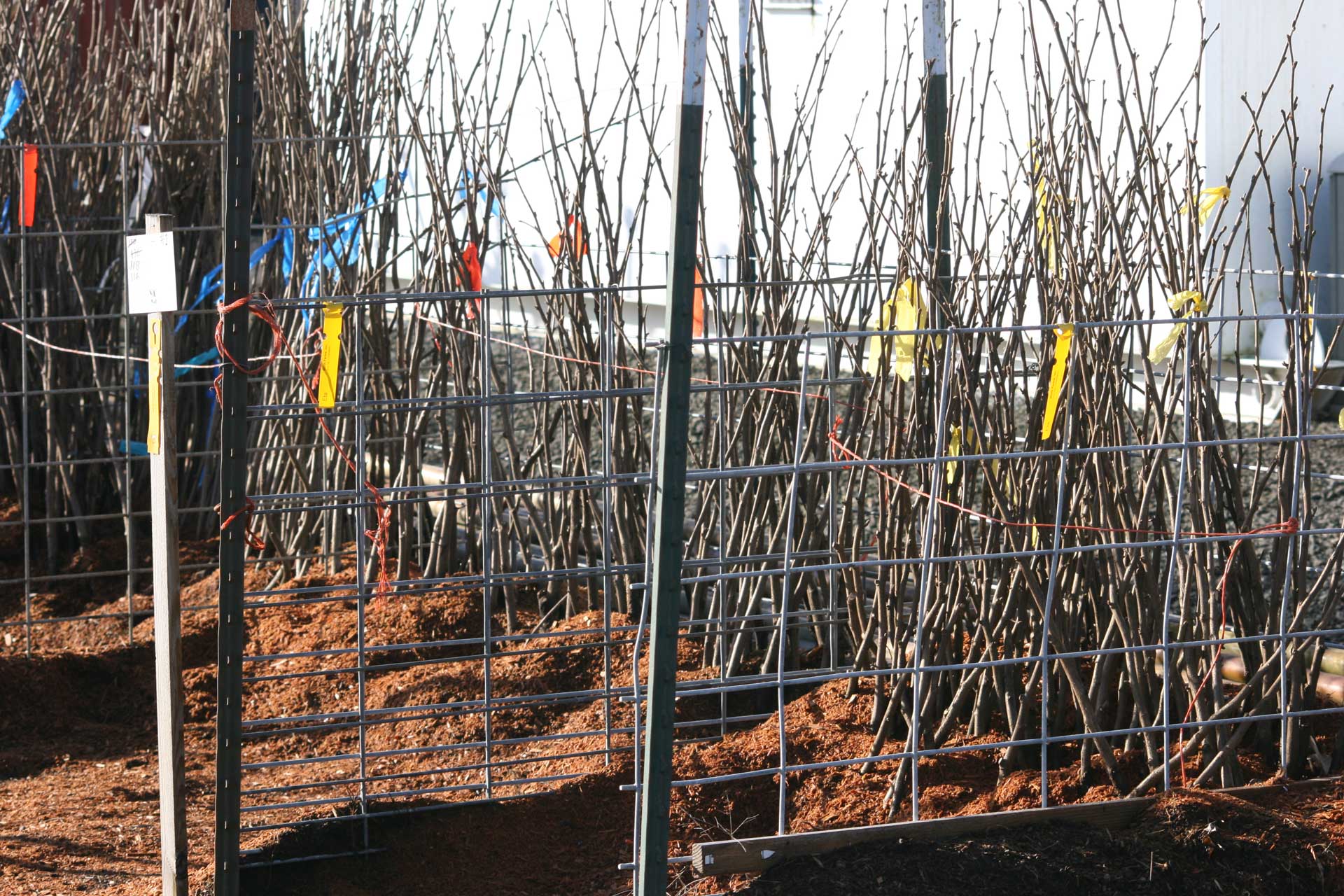
Tie-Off Layering vs Stool-Bed
Both Newton and Wirth use hog rings. Newton uses the tie-off method. Wirth uses the stool-bed method of propagation.
“Some might call it layering,” Wirth said of stool-bed.
The term “stool-bed” means a piece of ground where plants are propagated by mound layering. The difference between layering and stool-bed propagation might be a fine line that boils down to what the grower surrounds the mother trees with. Does he use sawdust, or does he use compost or aged manure? Wirth uses compost, mounding it about six inches thick around his nursery trees.
“It’s basically a low-grade potting soil,” he said. “A lot of guys use sawdust.”
Wirth prefers compost over sawdust because it has more available nutrients for the young trees. He doesn’t feel that sawdust gives trees much available nutrients until the following year.
“Trees store energy for next year. The fertilizer you use in the spring and summer is for the following year,” said Wirth.
If growers use sawdust instead of compost around nursery trees, Wirth suggests they add some slow-release fertilizer to feed the young developing root systems as well as the mother tree.
Either pile the compost or sawdust thick and wide around the nursery trees or keep it in place with boards or a ring of tin or tar paper (roofing material). Hazelnut grower Jason Whitehead of JRW Farms in Scio, Ore. uses sawdust and a ring of tar paper.
Make sure to keep the sawdust or compost damp so the young developing roots don’t dry out.
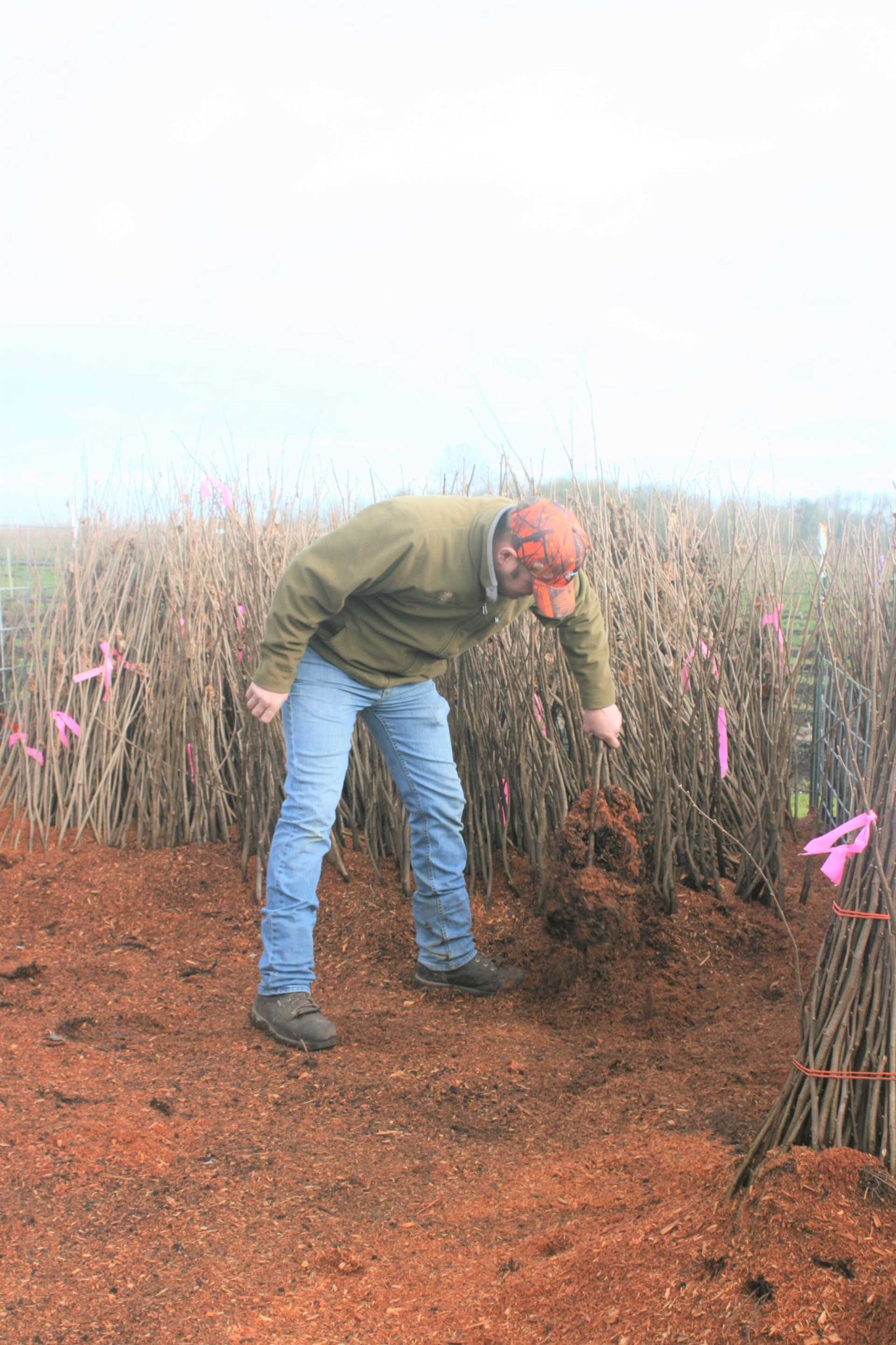
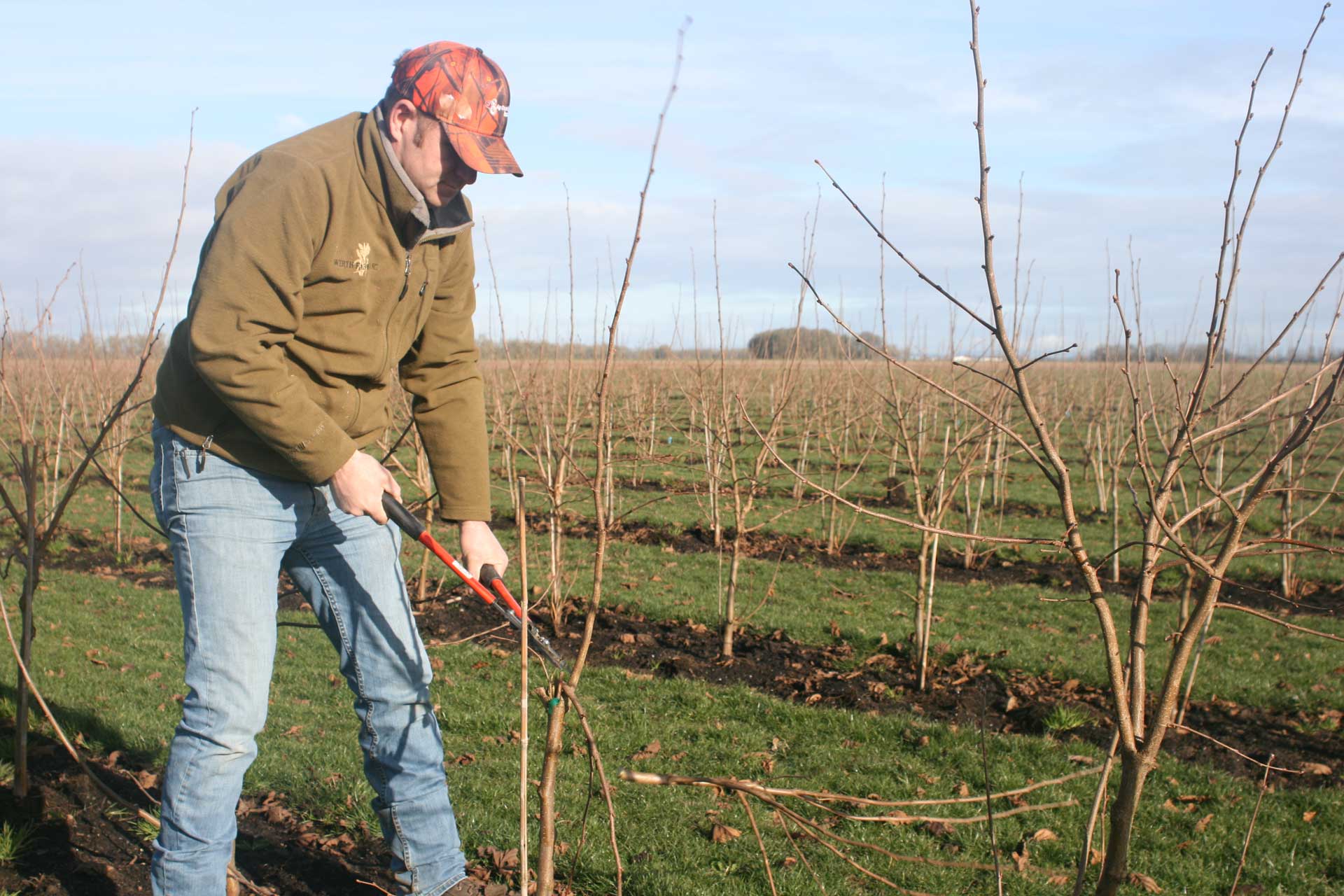
Manage the Sucker
Suckers start to shoot above ground in March or April and are generally about pencil-size in diameter by late spring and summer. That’s the size of sucker you’re looking for. Wirth uses a loose hog ring in May or June, sometimes even into July. He digs below the ground and uses hog ring pliers to crimp a loose hog ring around the base of the sucker.
Some growers apply a rooting hormone to the bottom 6-inches or so of the sucker above the hog ring. Wirth doesn’t use rooting hormone. He finds his trees root fine without it.
As the sucker strangles off from the mother tree, vigorous new roots grow above the hog ring.
In about mid-November, after leaves start to fall, carefully remove the strangled (girdled) suckers. They should break off easily by hand at the hog ring. Heal them into a holding area with damp sawdust until ready to plant or sell.
Wirth grows an average of 50,000 nursery trees a year. The past few years, he’s upped his production some.
“We’re doing more,” Wirth said. “But more guys got into it.”
He likes making a little money on the side with tree sales, but with more people getting into the nursery-stock game, it’s driving down prices of young trees. Wirth wants to see the prices go back up; otherwise, he’ll likely get out of propagating and selling trees altogether.
The food produced in the leaves of the strangled suckers through photosynthesis can’t reach the mother tree’s root system to feed it. To compensate for this, growers should provide plenty of fertilizer and water to the mother tree and stool.
It’s also helpful to leave some suckers ungirdled by hog rings so the leaves of those suckers feed the mother plant. Wirth and Newton both choose a new sucker each year to become the main trunk of the nursery tree for the following year.


Know Licensing Requirements
Before propagating any hazelnut plants intended for commercial use, be sure to check licensing requirements. Most of the new hazelnut varieties that come out of the Oregon State University (OSU) breeding program are patented. Any varieties that are protected by plant patents require a license to propagate them, whether it’s for use by the grower himself or to sell to other growers. Each variety requires an individual license and growers must pay for the first 1,000 tree royalties up front. Contact OSU for more information about licensing.
Growing trees in Oregon for sale to other growers also requires an agriculture nurseryman’s license, unless sales are less than $250 annually. Apply for the license through the Oregon Department of Agriculture. A nursery license is also required to propagate and sell hazelnut trees in California. Apply through the California Department of Food and Agriculture. Both the OSU patent license and the agricultural licenses involve keeping records of the numbers of trees sold, and varieties in the case of the OSU license, so growers can accurately fill out paperwork at the end of the year. Fees depend on the number of trees sold.







